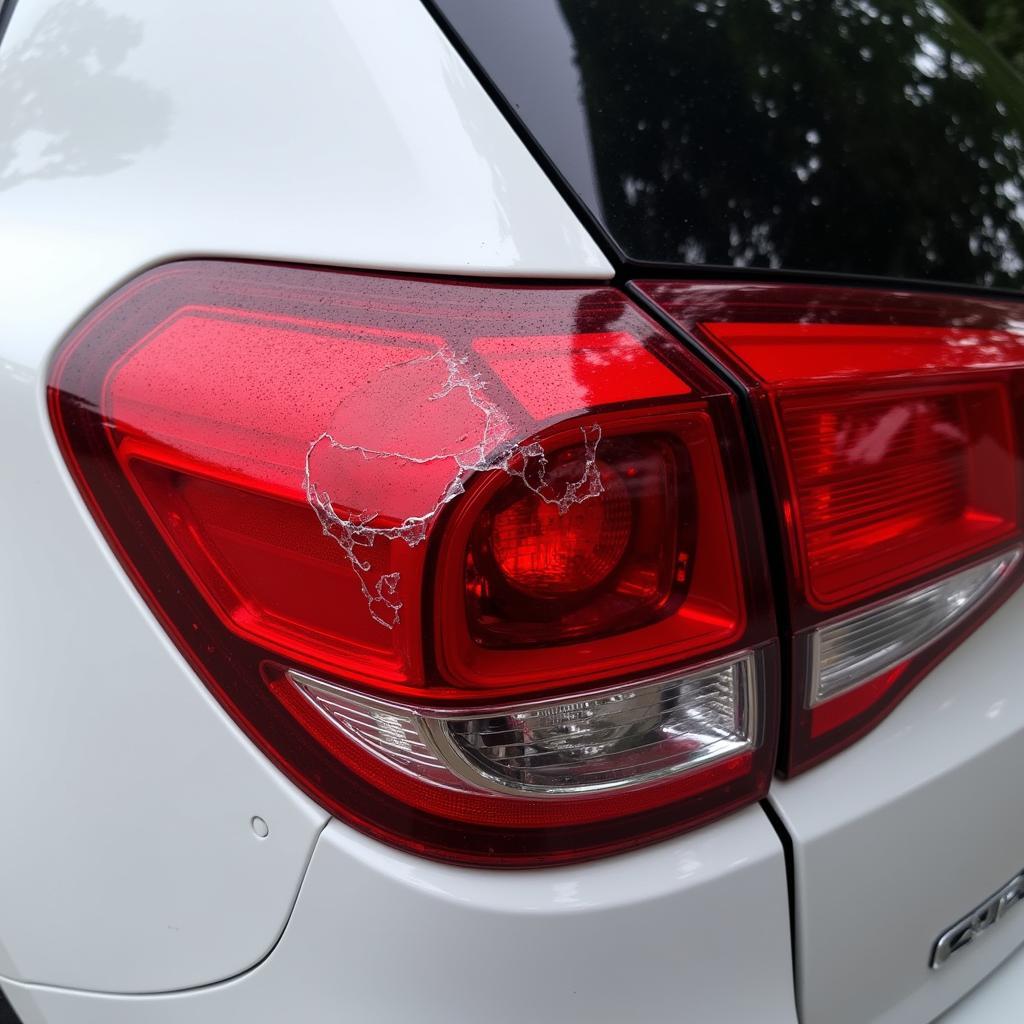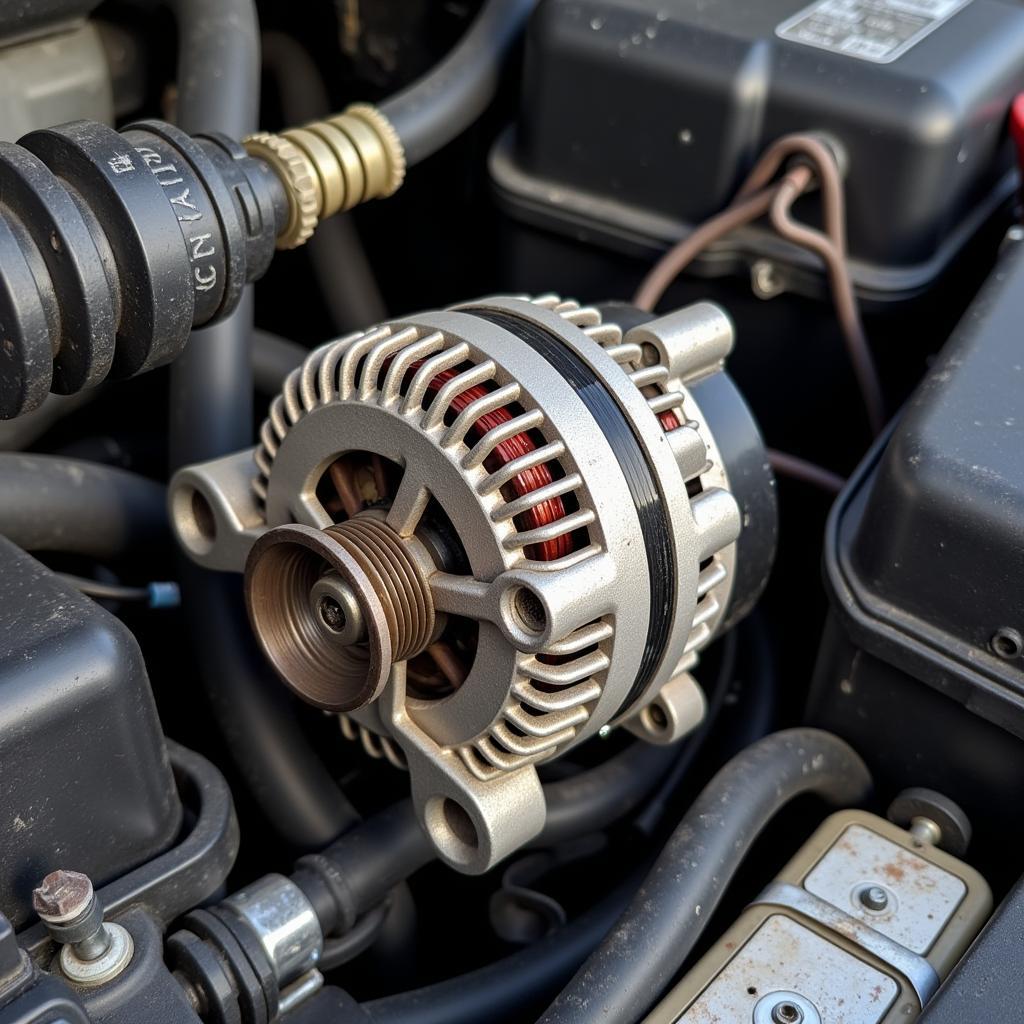Car paint chips are an inevitable part of car ownership. Whether it’s from rocks, road debris, or even minor bumps, these unsightly blemishes can detract from your car’s appearance and potentially lead to rust. Fortunately, you don’t need to break the bank to fix them. This guide will explore the Best Way To Fix Car Paint Chips, offering DIY solutions for various chip sizes and severities.
Understanding Car Paint Chips: Types and Severity
Before diving into repair methods, it’s essential to understand the nature of the damage. A small chip might only affect the clear coat, while a deeper one could expose the primer or even bare metal. Identifying the severity helps determine the best way to fix paint chips on your car.
Identifying the Damage
- Clear Coat Chips: These are the most common and easiest to fix, appearing as small, translucent spots.
- Primer Chips: Slightly deeper, these expose a white or gray undercoat.
- Base Coat Chips: Reaching the colored layer, these chips require more attention to ensure color matching.
- Bare Metal Chips: The most severe type, these expose the underlying metal and require immediate attention to prevent rust.
“Identifying the depth of a paint chip is crucial. It dictates the repair process and prevents unnecessary work,” says automotive expert, Robert Miller, ASE Certified Master Technician.
DIY Car Paint Chip Repair: A Step-by-Step Guide
Fixing minor car paint chips is a manageable DIY task. For more significant damage, or if you’re uncomfortable with DIY repairs, consult a professional. Here’s how to tackle the best way fix car paint chips:
- Clean the Area: Thoroughly wash and dry the affected area to remove dirt and debris. Use isopropyl alcohol to clean the chip itself.
- Sand (If Necessary): If there are any raised edges around the chip, use 2000-grit sandpaper to smooth them out gently.
- Apply Primer (If Necessary): For chips that reach the primer or metal, apply a thin layer of automotive primer, allowing it to dry completely.
- Apply Touch-Up Paint: Using a fine-tipped applicator, carefully apply thin layers of touch-up paint to the chip. Allow each layer to dry before applying the next. Less is more here. Overfilling the chip will create a noticeable bump.
- Apply Clear Coat (If Necessary): Once the touch-up paint is dry, apply a thin layer of clear coat to protect the repair and blend it with the surrounding finish.
- Level and Polish (If Necessary): After the clear coat has cured, use rubbing compound and polishing compound to level the repair and restore the shine.
“Patience is key when applying touch-up paint. Multiple thin coats will result in a much better finish than one thick coat,” advises Sarah Chen, Automotive Paint Specialist. The best way to fix paint chips on black car is the same as any other color, but matching the paint is even more crucial.
When to Call a Professional
While minor chips can often be addressed with DIY methods, deeper or more extensive damage might require professional attention, especially for scratch fix on car. If you’re dealing with a large area of chipped paint, cracks, or dents, it’s best to consult an auto body repair shop. They have the expertise and equipment to handle complex repairs and achieve a flawless finish. Likewise, how to fix bad scratch in car door often requires professional help.
Conclusion
Knowing the best way to fix car paint chips is essential for maintaining your vehicle’s appearance and preventing further damage. By understanding the different types of chips and following the appropriate repair steps, you can often address these blemishes effectively. Remember, early intervention is key, especially for chips that expose bare metal. For professional assistance or more complex repairs, don’t hesitate to connect with AutoTipPro at +1 (641) 206-8880 or visit our office at 500 N St Mary’s St, San Antonio, TX 78205, United States. We’re here to help!






Leave a Reply